Global climate change is profoundly reshaping the Arctic region, not only physically but also in international politics. Yet Arctic development is of concern to more than the Circumpolar states. The issues are global, and East Asia is no exception. Japan, South Korea and China in particular have been increasingly deepening their involvement in Arctic affairs. The evolving situation of the Arctic region could also have significant impact on political relations and the regional security architecture in East Asia, providing new opportunities for cooperation and additional sources of conflict. This paper considers security implications of the Arctic thaw to East Asia, where the structure of the regional Cold War confrontation profoundly shapes the geopolitical order to this day.
Unlike Europe, where the Cold War structure of the Yalta System was completely demolished by the early 1990s, the structure of the regional Cold War confrontation remains profoundly embedded in East Asia. It has gone through political “thaws” or détentes and other notable transformations over the years; yet the foundation of the “San Francisco System” laid in the early post-World War II years essentially continues in East Asia even to the present day. Meanwhile, rising temperatures leading to rapid thaw in the Arctic has been reshaping the world both physically and in international politics. Taking the San Francisco System as its conceptual grounding, the paper first traces notable developments of post-World War II regional political and security relations in East Asia, with particular attention to the regional conflicts including territorial disputes, considers possible impacts of the emerging Arctic thaw to the status quo, and concludes with some recommendations for the concerned states to prepare for the consequences of climate change in the security environment involving the East Asian and neighbouring Arctic states.1
THE SAN FRANCISCO SYSTEM IN POST-WORLD WAR II EAST ASIA
The Cold War structure of the post-World War II world order was often attributed to the Yalta System. This system originated from agreements over the construction of the postwar international order made at Yalta in February 1945 by the leaders of the three Allied powers (the United States, the United Kingdom, and the Union of Soviet Socialist Republics [USSR]). However, the San Francisco System — the postwar peace treaty between the Allied countries and Japan, signed in September 1951 in San Francisco, along with its associated political and security arrangements — largely determined the postwar regional order in East Asia and the Pacific (Hara 2007). The San Francisco System may be compared to the Euro-Atlantic’s Yalta System, in terms of the three major features of the Cold War: ideology as a fundamental value of social existence, military confrontation including security alliances, and regional conflicts as the frontiers of the Cold War confrontation.
Ideology: Ideologically, in the postwar decolonization movements, Asia was politically divided between “free world” and communist blocs, and economically divided between capitalist and socialist blocs under strong US or Soviet influence. The Cold War in Asia, however, developed somewhat differently than the bipolar Euro-Atlantic system in that the People’s Republic of China (PRC) emerged as another pole of the communist sphere.
Military and Security Alliances: The US-led post-World War II military structure in the region is called the San Francisco Alliance System. In East Asia and the Pacific, with little success in establishing large anti-communist multilateral security alliances like the North Atlantic Treaty Organization (NATO), the United States formed a hub-and-spokes security system of separate arrangements with its regional allies.
Regional Conflicts: Regional conflicts are more characteristic of Asia than of Europe. Whereas Germany was the only divided nation in Europe, competition over spheres of influence created several Cold War frontiers in East Asia. The origin of such regional conflicts is deeply rooted in the postwar territorial dispositions of Japan, particularly the San Francisco Peace Treaty. Vast territories, extending from the Kurile Islands to Antarctica and from Micronesia to the Spratly Islands, were disposed of in the treaty. The treaty, however, specified neither their final devolution (i.e., to which state they belonged) nor their precise limits, thereby sowing the seeds of various “unresolved problems” in the region. The major regional conflicts in this region — including the territorial disputes over the Northern Territories/Southern Kuriles, Dokdo/Takeshima, Senkaku/Diaoyu, and Spratly/Nansha and Paracel/Xisha; the Cross-Taiwan Strait issue; the divided Korean Peninsula; and the so-called “Okinawa problem” — all derived from the postwar territorial dispositions of the former Japanese empire.
Strategic Ambiguity
Close examination of the Allies’ documents, particularly those of the United States (which was primarily responsible for drafting the peace treaty), reveals that some, if not all, of these problems were intentionally created or left unresolved to protect US strategic interests against the backdrop of the intensifying Cold War (Hara, 2007). During the postwar period leading up to the San Francisco Peace Conference of 1951, the United States carefully prepared the Allies’ peace settlement with Japan. Its early drafts were, as a whole, very rigid and punitive toward Japan, reflecting the spirit of the Allies cooperation. Those drafts also provided detailed and clear border demarcations specifically to prevent future territorial conflicts. However, as the Cold War intensified, particularly to the extent that it developed into a “hot” war in Korea, the peace terms changed to reflect new US strategic interests. Specifically, Japan and the Philippines had to be secured for the non-communist West and as pro-US allies in East Asia, whereas the communist states were to be contained. Accordingly, the peace treaty became “generous” and its wording “simple” — but thereby ambiguous, leaving the potential for conflicts to erupt among East Asian states. The peace treaty was the result of careful deliberations and several revisions; issues were deliberately left unresolved.
These regional conflicts — such as those noted earlier — have generally been treated as separate and unrelated issues, yet, they emerged as a result of the Japanese peace treaty, which was prepared when the US leadership seriously feared that both South Korea and Taiwan might be “lost” to, or unified by, their communist counterparts. Neither of the governments of China (PRC or ROC) nor Korea (ROK or DPRK) was invited to the peace conference. The Soviet Union participated in the peace conference but did not sign the treaty. Just as the Northern Territories/Kuriles Islands issue was left between Japan and the Soviet Union as an unresolved by-product of the Cold War, seeds of territorial disputes were left between Japan and its partial and mostly communist neighbours of “Korea” and “China” respectively.2 The San Francisco Peace Treaty also concerned the settlement of other past “history” issues, such as war crimes and reparations. These issues also remained owing to the US policy shift to a generous and ambiguous peace with Japan, or what some might call its “strategic ambiguity.” The unresolved problems, derived from the postwar disposition of Japan, continue to divide countries and people in East Asia even to this day.
COLD WAR “THAWS” AND THE TRANSFORMATION OF THE SAN FRANCISCO SYSTEM
During the 60 years since the San Francisco agreement, East Asia has undergone notable transformations. After alternating periods of East-West tension and the relaxation of tensions, such as the Cold War thaws of the 1950s and the 1970s, the Cold War was widely believed to have ended by the early 1990s. These changes also affected relations among neighbouring countries in East Asia, with important consequences for some lingering regional conflicts.
Cold War Thaw in the 1950s
Movement toward a thaw in East Asia began to be observed soon after Stalin’s death in 1953, with a cease-fire in the Korean War. Watershed events such as the Indochina ceasefire agreement and the US-UK-France-USSR Geneva Conference in 1954, and the Bandung Conference in 1955 further strengthened this thawing trend. Against the backdrop of warming East-West relations, Japan and the Soviet Union began peace negotiations. In 1956, the two countries restored diplomatic relations and agreed, in a joint declaration, to the transfer of the Shikotan and the Habomai Islands to Japan following the conclusion of a peace treaty between them. However, Japan was pressed by the United States to demand the return of all four of the island groups in its so-called Northern Territories. Indeed, the United States warned that it would not return Okinawa to Japan if its claims to Kunashiri and Etorofu Islands were abandoned.
The US support for the four-islandreturn formula was made with full knowledge that it would be unacceptable to the Soviet Union, thus preventing Japan from achieving rapprochement with the Soviet and communist blocs. The United States feared the thaw working to the Soviet Union’s strategic advantage, and that a Japan-Soviet peace treaty would lead to the normalization of relations between Japan and communist China. Further, if Japan settled the Northern Territories dispute with the Soviet Union, there would be considerable pressure on the United States to vacate Okinawa, whose importance had significantly increased as a result of the United States’ Cold War strategy in Asia — especially during the Korean War.3
The PRC in the East Asian Cold War
In East Asia, the Cold War developed differently from the Euro-Atlantic bipolar system; rather, a tripolar system, consisting of the United States, the PRC and the USSR, emerged following the Sino-Soviet split. Communist China had been targeted by the US containment strategy since its intervention in the Korean War. With its nuclear development in 1964, China came to occupy the central position in the Asian Cold War.
Conversely, Sino-Soviet confrontations were initially confined to oral and written communications, but escalated into military clashes along the border, especially over ownership of Damansky Island on the Ussuri River in 1969. This frontier problem did not derive, and was therefore different, from those conflicts that emerged out of the postwar disposition of Japan. Nevertheless, it came to symbolize the height of Sino-Soviet tension that defined the Cold War in East Asia, setting the stage for the dramatic structural transformation during the 1970s thaw.
Thaw in the 1970s
The warming of East-West relations in the early 1970s was similar to that of the 1950s, in that peace was not necessarily achieved in an ideological sense and the relative influence of the United States was declining. Exploiting the Sino-Soviet difference, the United States took major initiatives to “break the ice” this time, with the Nixon administration entering office with normalizing relations with communist China as its top diplomatic agenda. During this period of détente, several major US allies, including Japan, opened diplomatic relations with the PRC government, which also replaced the ROC at the United Nations.
In parallel with these moves, the focus of the Sino-Japanese territorial dispute shifted to the Senkaku/Diaoyu Islands, where resource nationalism was accentuated by the new energy potential discovered in their vicinity. The United States returned Okinawa to Japan in 1972, realizing the previous administration’s promise, but took “no position on sovereignty” over the disputed islands4; it merely returned administrative rights to Japan. Again, the United States adopted a policy of strategic ambiguity. Leaving the dispute unsettled — by not taking sides with any disputant, and keeping the wedges between the neighbouring states — met US interests, helping to retain its military presence, particularly in Okinawa, and political influence in the region. Just as the wedge of the Northern Territories problem was set in place with the four-island-return claim between Japan and the Soviet Union during the thaw of the 1950s, the Senkaku/Diaoyu issue was another wedge left between Japan and China during the 1970s thaw.
Japan and the USSR also moved closer during this period, holding a second summit meeting in Moscow in 1971, 15 years after their first meeting in 1956. The emerging opportunity of the Siberian resource development was one of the biggest factors behind that move. However, before they reached the resolution of the territorial problem or a peace treaty, their relations began to sour, especially in 1978, with the signing of the Treaty of Peace and Friendship between Japan and the PRC, incorporating an “anti-hegemony” clause directed against the USSR (at China’s insistence), and the Soviet invasion of Afghanistan. The USSR began a buildup of forces in the Far East, including the disputed islands, which alarmed Japan. In the meantime, the unresolved problems that shared a common foundation in the San Francisco Peace Treaty continued to fester. In addition to a divided China, the newly independent countries — (South) Vietnam, the Philippines, Malaysia, and Brunei — joined the territorial disputes in the South China Sea.
Remaining Regional Cold War Structure
In the global thaw from the late 1980s to the early 1990s, the Cold War was widely believed to have ended. Both US-Soviet and Sino-Soviet rapprochement were achieved, and a remarkable relaxation of tension occurred in East Asia, where expectations soared for a solution to some of the most intractable frontier problems. The SinoSoviet/Russian border negotiations, ongoing since the late 1980s, finally ended with mutual concessions in the 2000s. None of the regional conflicts that share the foundation of the San Francisco System, however, reached a fundamental settlement. In fact, compared to the Euro-Atlantic region, where the wall dividing East and West completely collapsed, the changes that took place in East Asia left fundamental divisions intact. With the exception of the demise of the Soviet Union, the region’s Cold War structure of confrontation basically continued. Today, more than 20 years later, and 60 years after San Francisco, China and Korea are still divided, with their communist or authoritarian parts still perceived as threats by their neighbours embracing alliance with the US. Accordingly, the US military presence and its associated issues such as the Okinawa military base problem continue. Whereas NATO lost its anti-communist drive when it accepted formerly communist Eastern European countries as members, there are no indications that the remaining San Francisco Alliance System will either dissolve or embrace North Korea or the PRC.
In retrospect, the term Cold War has been used largely in two ways: first to signal that confrontations between superpowers or conflicting systems are highly strained, and secondly to suggest the structure of such confrontations. The generally accepted view of the end of the Cold War in East Asia is based on the first perception. The relaxation of tension may be a necessary condition for ending the Cold War, but it is not sufficient unless accompanied by the demolition of its fundamental structure. To the extent that the fundamental structure of cold-war confrontation remains, the dramatic relaxation seen in East Asia since the late 1980s is more like the periodic thaws than the end of the Cold War per se. As the 1970s thaw rested in part upon the perceived achievement of Soviet military parity with the United States, China’s recent assertiveness in its aspiration to military strength cannot be ignored. The relaxation of tension seen in the Cold War thaws of the 1950s and the 1970s gave way to the deterioration of East-West relations. Similar phenomena have been observed in East Asia, such as US-China conflicts after the Tiananmen incident of 1989, military tensions in the Korean Peninsula and across the Taiwan Strait, the disruption of negotiations between Japan and North Korea to normalize their diplomatic relations, and political tensions involving Japan, China, and their neighbours over territorial disputes.
Deepening Interdependence in Economic and Other Relations
While countries and peoples in East Asia have been divided by politics, history and unsettled borders, they have nevertheless deepened their interdependence in economic, cultural and other relations. The economic recovery and transformation of East Asian countries for the last 60 years from the ruins of war are, in fact, remarkable. Beginning with Japan in the 1950s, followed by the so-called newly industrializing economies (NIES) in the 1970s and 1980s, and now with China’s rise, East Asia (with the exception of North Korea) has become the most expansive centre in the world economy. Economy is indeed the glue connecting the regional states.
Economic-driven multilateral cooperation and institution building developed notably in East Asia with the creation of multiple institutions, especially in the 1990s and the 2000s. This also paved the way for confidence-building measures (CBMs) among neighbouring states. Since the 1990s, progress in CBMs at both governmental and non-governmental levels constitutes a leap beyond the Cold War era, particularly in non-traditional security areas such as the environment, food, energy, terrorism and natural disasters. Nevertheless, in contrast to their deeply intertwined economies, the depth of institutional integration pales compared with that of Europe. While the European Community of the Cold War era has long since evolved into the European Union, even the idea of an “East Asian Community” (not an “East Asian Union”) is still a future aspiration. As yet, the East Asian countries do not have relationships of sufficient mutual trust. Their countries and peoples are strongly connected economically, but they remain divided politically, and are still in dispute over unresolved problems, notably those over territorial sovereignty and borders but also over historical memory issues that have proven similarly intractable (Hara 2012).
THE ARCTIC THAW:
POLITICAL AND SECURITY IMPLICATIONS
In the latter half of the twentieth century, the dramatic changes of the global political and security environment, such as the Cold War and its thaws, did not bypass East Asia. In the twenty-first century, the Arctic thaw is now reshaping the world both physically and in international politics. This section considers emerging and possible impacts of this Arctic thaw to the status quo in East Asia.
The Evolving Situation in the Arctic and East Asia
Global climate change is profoundly reshaping the Arctic region today, generating heated discussions on issues such as new marine transportation routes, resource development, border disputes and the environment. With the emerging new northern sea passages (the Northern Sea Route and the Northwest Passage), the Arctic thaw is opening new opportunities to East Asian states. These northern transportation routes can significantly shorten the shipping distance from the Atlantic to the Pacific, from Europe or the east coast of North America to East Asia, making possible reductions in shipping time, fuel costs and CO2 emissions.
Navigational safety could be yet another advantage. The existing maritime transportation route from Europe and the Middle East through the Suez Canal is not always safe, due to uneasy political conditions in the Middle East and piracy en route, especially near Somalia. The northern routes are, therefore, becoming attractive alternatives to East Asian states. Resource development and shipping from the Arctic region to Asia using the passage are becoming realistic as well. With the advancement of technology, resource development in the extremely cold Arctic environment (which used to be impossible) and transporting resources to Asia and other regions are becoming possibilities. Actual production is already underway in some coastal areas (see Figure 1). Melting ice in the Arctic is also an expanding fishing ground.
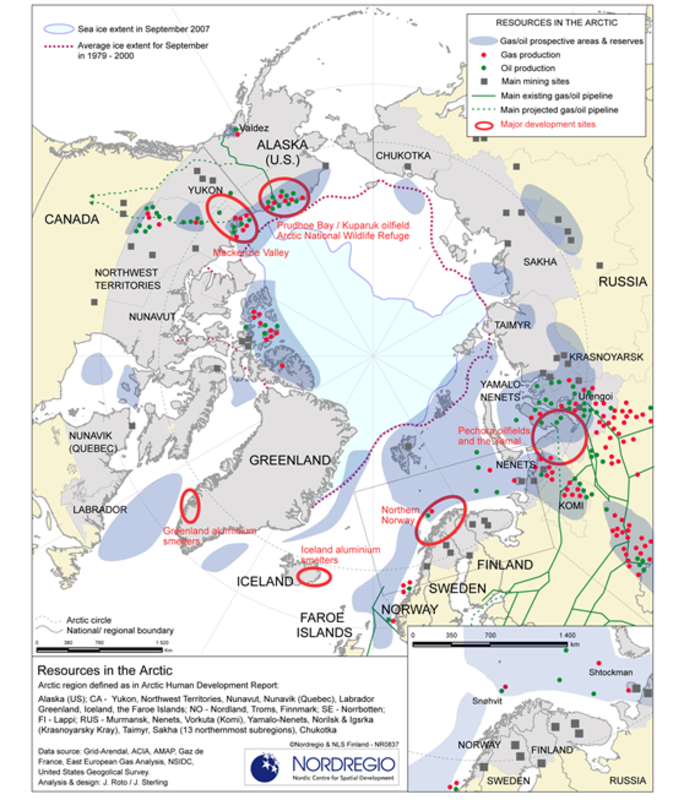 Figure 1: Resources in the ArcticThe map shows the main sites of gas and oil production, including infrastructure, mining and sea ice extent in the Arctic. Source: Nordregio, 2013. (Designer/Cartographer: Johanna Roto and José Sterling) Figure 1: Resources in the ArcticThe map shows the main sites of gas and oil production, including infrastructure, mining and sea ice extent in the Arctic. Source: Nordregio, 2013. (Designer/Cartographer: Johanna Roto and José Sterling) |
Major East Asian states — particularly the PRC, Japan and South Korea — are becoming increasingly interested in the evolving Arctic region. China is a growing economic giant, now the second largest economic power, surpassing Japan’s GDP in 2011. With the world’s largest population, it is also the world’s largest energy consumer, surpassing the United States. Following the March 2011 Fukushima disaster, Japan is reducing its dependency on nuclear power, expanding imports of oil and gas in the short run while by seeking alternative energy supplies. It is also seeking new transportation routes to boost trade as well as resource access. South Korea, which has a strong shipping industry, is also interested in the evolving Arctic situation. In fact, as non-Arctic states, the PRC, Japan, South Korea, the Taiwan (ROC) and even North Korea, would all potentially benefit quite significantly from shorter shipping routes and possible access to alternative energy sources and new fishing grounds. They also share environmental and scientific concerns in the Arctic region, as well.
New Opportunities for Cooperation and Reconciliation
If the Arctic thaw continues, as many scientists and media reports predict, the region’s geo-economic and strategic importance to East Asia will further increase and might also provide new opportunities for cooperation, competition, and confrontation among East Asian nations and other powers. By opening new shipping routes across the Arctic, marine traffic and trade volume from Europe and North America to East Asia and further down to Southeast Asia would increase. Associated economic effects, such as invigorating shipbuilding and its related industries, hub ports and coastal cities, could also be expected, thus further energizing the East Asian economy. The East Asian seas could then become vital marine passages. While this has a potential to intensify competition and conflict among East Asian states seeking to protect their respective sea lanes, cooperation among the neighbours could become more important and necessary to secure the safe passage of their ships cruising and engaging in commercial activities in this region, and establish stability in regional security environment.
The increased Arctic Passage marine transportation to Asia would also increase marine traffic near the disputed islands (Northern Territories/Southern Kuriles, Dokdo/Takeshima, Senkaku/Diaoyu, and Spratlys and Paracels) located in the sea lanes connecting the Pacific Ocean, the Sea of Okhotsk, the Sea of Japan (East Sea), the East China Sea, and the South China Sea. This might motivate the concerned states to effectively manage and even to reach some settlement in their territorial and maritime border disputes.
 Figure 2: Major Sea Lanes Connecting the Arctic and East Asia, and the Disputed Territories Figure 2: Major Sea Lanes Connecting the Arctic and East Asia, and the Disputed Territories |
Among the territorial and maritime border problems in East Asia, the evolving situation in the Arctic is likely to result in the largest impact on the Northern Territories/Sothern Kuriles problem between Japan and Russia. In recent years, Russia has successfully negotiated boundary demarcations with many of its neighbours, and Russian President Vladimir Putin has been sending positive signals for resolving the territorial problems with Japan since his first presidency in the 2000s. The evolving situation in the Arctic may provide Japan further incentives to settle this territorial problem.
Japan’s negotiating position with Russia over the territorial issue has been reversed over the past two decades. In the early 1990s, with Russia still facing the economic and financial crisis inherited from the collapsed Soviet Union, Japan’s attitude, as the then second-largest economic power, can be described as rather condescending. Japan assumed that Russia was in desperate need of its economic assistance, and thus linked its economic aid to the territorial dispute, which eventually invited criticism even from its Western allies. One major criticism came from former US President Richard Nixon, who condemned Japan for “conditioning aid on Russia’s return of four tiny northern islands” (Nixon, 1993). Now, however, the inverse is true, as Russia is a resource-rich capitalist country and the world’s foremost oil-producing country. It is the biggest Arctic nation, and is active in resource development and production in the Arctic Circle. While Russia has regained its power and influence with the leverage of its rich resources, Japan has been in decline in its negotiating position since the collapse of the “bubble economy,” followed by the “lost decade” and the Fukushima disaster.
The opening of the Arctic Sea is one factor making Russia a very attractive neighbour to Japan. A report produced by Japan’s Ocean Policy Research Foundation (OPRF) proposes “measures which Japan should take immediately towards sustainable use of the Arctic Ocean,” and states that “Russia is the largest coastal country of the Arctic Ocean, and most of the Arctic-related matters in which Japan has interests involve Russia.” Further, while the report acknowledges that “there is a difficult problem in the Japan-Russia relationship,” it urges the Japanese government to work with Russia to deal with evolving Arctic problems (OPRF 2012). Japan’s present Prime Minister Abe Shinzo’s administration appears to have been positively exploring points of compromise on the territorial issue with Russia. In April 2013, for example, Abe agreed with Putin to revive the island negotiations by increasing government contact, including reciprocal visits by the leaders and their foreign ministers.5 However, as past experience has proven, thaws and the potential for resources may not be enough to resolve the nations’ territorial disputes. In fact, their bilateral negotiations have stagnated in the complex international politics surrounding Russia’s annexation of Crimea and the crisis in Ukraine in 2014.
Japan’s relations with South Korea and China also deteriorated over the island disputes in 2005, and again in 2012-2014. Yet, all of these countries have track records of advancing their relations while shelving the territorial as well as historical memory disputes. As noted earlier, the economy is the glue connecting regional states. Once policy priority shifts to the economy or other common areas of interest, further cooperation and development may be possible in the areas surrounding the disputed islands. Russia has signed a historic 30-year gas supply deal with China in 2014, which may possibly pave its way for more energy cooperation with Korea and Japan as well. Russia and China have in fact been invigorating their cooperative investment and development in various areas, including the Rason Special Economic Zone and its Rajin port facing the Sea of Japan (East Sea) in North Korea since 2011, showing a potential to revive the early 1990s regional cooperation involving North Korea (Sankei News 2012; NNN News 24 2013). This move may be further facilitated by the opening of an operative shipping route in the Arctic.
The situation surrounding the nuclear development of North Korea has been one of the most destabilizing factors in the region. Instead of isolating and driving North Korea into a corner where there is no other option but further developing weapons of mass destruction — which would only serve to heighten military tensions — peaceful coexistence or stability of the region may be sought by engaging it and exploring and expanding areas of cooperation.
Cooperation Framework
Finding ways for East Asian neighbours to work together has the potential to create a genuine win-win situation for the states concerned. Some arrangements or governance cooperation may be possible to establish stable regional order in the areas where disputed islands and other flashpoints are. This could also be connected to development of the 2002 Association of Southeast Asian Nations (ASEAN)-China Declaration on the Conduct of Parties in the South China Sea, where China confronts its neighbours over the Spratlys and Paracel islands.
Most states have defence programs in order to be prepared for the contingency or development of undesirable security situations. The US military presence is indispensable for its regional allies and also contributes to regional security. This situation seems destined to continue for the foreseeable future. Existing security arrangements that can be applied to the areas covering East Asia and the Arctic include the US hub-and-spokes (i.e., San Francisco) alliance system in the Asia-Pacific and NATO in the Euro-Atlantic. While these systems can be collectively seen as security assurance for allied members, they can also serve as containment networks targeting non-members, specifically Russia, China and North Korea. However, there are other multilateral dialogue frameworks, including some or all of those countries, such as the Six-Party Talks, the ASEAN Regional Forum, and the East Asian Summit.
Engagement in Arctic affairs is an emerging common interest among East Asian states and could be a new area of cooperation among them; however, states appear to be in a competing mode, as each country has been independently seeking its own way of engaging in Arctic affairs. Now that the PRC, Japan and South Korea are all Permanent Observers of the Arctic Council (since May 2013), a unified strategy may become their mutual interest. It seems worth investigating the possibility of establishing a new cooperative framework, combining the existing PRC-Japan-South Korea trilateral framework and the neighbouring three Arctic powers of Russia, the United States and Canada, or a similar framework with North Korea (i.e., the existing Six-Party Talks plus Canada). Canada, Russia and the United States have extensive commitments and long histories of engagement in the Arctic. These are the major Arctic nations with gateways to the Pacific, and also have long histories of engagement in East Asia. The combination of their northern responsibilities, geography and engagement in East Asia, and East Asia’s growing interest in the Arctic, make nations of both regions key players in determining the future direction of governance and development in the region.
The vulnerable character of maritime security makes it necessary to establish a practice of following and making common rules. That all the concerned states become signatories of the UN Convention on the Law of the Sea (UNCLOS) will be a very important base to solve disputes. In this sense, the participation of the United States, which has not yet ratified UNCLOS, will be an important step.
From Thaw to the Next Cold War?
Whereas there may be good potential for cooperation among East Asian states in areas such as the development of resource and northern passages, there may also be a danger that tensions among the regional countries may increase, especially in the disputed areas. As seen in the past, similar tensions may rise again from the remaining structures of Cold War confrontation, where relations among neighbours, including their territorial problems, may be involved in a new power game. The Arctic thaw may become a new factor. As noted earlier, during previous periods of warming of East-West relations, the United States did not necessarily facilitate reconciliation or clear settlement of the territorial problems between Japan and its neighbours for reasons of realpolitik. Continued conflicts may still be seen by policymakers in Washington as meeting US interests, as long as they are manageable and do not escalate into a large-scale war. Although an accommodation between Japan and its neighbours is preferable for regional stability, it may not be viewed as beneficial to US interests if it is perceived as likely to reduce or exclude US influence. “Manageable instability” actually helps justify the continued substantial US military presence in the region, not only enabling the United States to maintain its regional influence, but also contributing to operations farther afield, such as in the Middle East and, in the future, possibly the Arctic.
The United States has redirected its strategic focus toward the Asia-Pacific in recent years. It is stepping up its naval presence in the Pacific by shifting the bulk of its naval fleet from the Atlantic as part of the so-called Asia “rebalancing” initiative. On June 2, 2012, US Defense Secretary Leon Panetta announced that “By 2020 the Navy will reposture its forces from today’s roughly 50-50 split from the Pacific and Atlantic to a 60-40 split in those oceans” (cited in Neisloss 2012). This includes a troop deployment in Darwin, Australia and military engagement with the Philippines and other ASEAN countries in the South China Sea. Many have explained this shift as counterbalancing China in the Asia-Pacific. However, it may also serve as a possible measure directed to its future defence of the north Pacific and the Arctic. The premise of conventional strategy — that the Arctic Ocean is frozen and the cruise of a naval fleet is impossible — now appears to be collapsing. There is a possibility that the Arctic may serve as a stage of military operation or become an arena of the marine power balance game.
In recent years, Russia has become active in its military activities in the Arctic Ocean, protecting its rights to seabed resources, controlling the Northeast Passage to prevent foreign intervention, and defending the sea lane to East Asia (OPRF 2012). A statement of principles, approved by then Russian President Dmitry Medvedev in 2008, regards the Arctic as a strategic resource base of primary importance to Russia. Foreseeing the possible rise of tensions developing into military conflict, the document prescribes “building groupings of conventional forces in the Arctic zone capable of providing military security in different militarypolitical conditions” (Rossiyskaya Gazeta 2009).
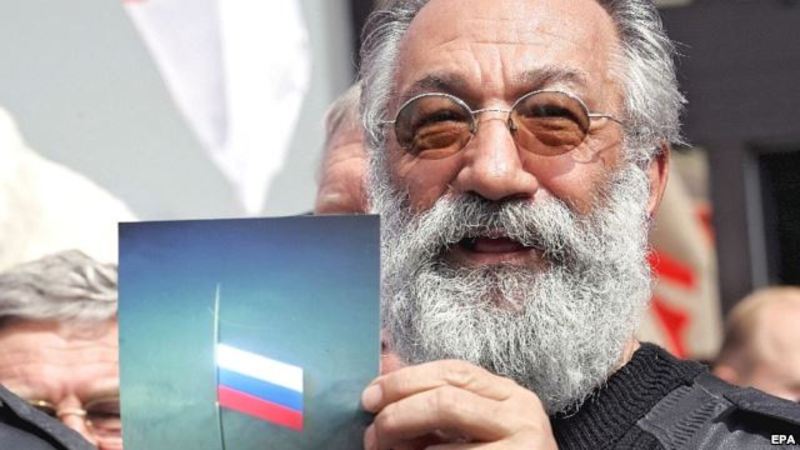 Artur Chilingarov, head of Russian expedition to the Arctic-2007, shows picture of Russian flag in the seabed below the North Pole in August 2007. Artur Chilingarov, head of Russian expedition to the Arctic-2007, shows picture of Russian flag in the seabed below the North Pole in August 2007. |
The Southern Kuriles/Northern Territories, located in the northern limit of the ice-free passage and at an important gateway to the Pacific Ocean, were once considered to have vital strategic importance, especially in the late 1970s and 1980s, when the Sea of Okhotsk became a bastion for Soviet missile firing of nuclear-powered submarines.6 As the southern limit of the ice-free passage moves north due to global warming, these disputed territories might become less important in this sense, but their strategic value might increase in another. For the purpose of basing the coast guard to protect sea lanes, port and military facilities may be strengthened or established. Japan is located in such a way as to block the advance of its neighbouring states—China, Russia and Korea—to the Pacific Ocean. In 1950, then US Secretary of State Dean Acheson announced the US Cold War defence perimeter to confront communism in the western Pacific, running along the Aleutians to Japan and then to the Philippines, which came to be known as “Acheson Line”. Now, China, having successfully demarcated its long northern border with Russia, has shifted the focus of its border defence to its ocean frontiers. It is no coincidence that the “First Island Chain” in the present Chinese defence doctrine overlaps with the Acheson Line.7
According to the OPRF (2012), “If melting ice progresses in the Arctic Ocean and the power game over the naval supremacy of the Arctic Ocean aggravates, along with the US military deployment, operation of the Marine Self Defense Force of Japan would also be affected, e.g. in dealing with the Chinese navy, the Russian Far East fleet near Hokkaido and surrounding ocean area of the Kurile islands.” This could mean that the importance of Japan in the US-Asia strategy, and the strategic importance of the Northern Territories and other disputed territories might increase. Thus, there is a possibility that the new security climate change created by the Arctic thaw may re-intensify the remaining structure of Cold War confrontation. Accordingly, the resolution of territorial problems may become yet more difficult.
CONCLUSION AND RECOMMENDATIONS
The Cold War thaws provided opportunities for settling territorial problems and political rapprochement among East Asian neighbours. However, those chances were lost and no definitive settlements have been reached. Divisions in East Asia continue, as does the San Francisco System. Although the system has gone through notable transformations, with the structural foundation for its predominance still in place, the United States continues to hold the most important key to future direction of the political and security order in the region.
The Arctic thaw is likely to provide new opportunities for regional and intra-regional cooperation, as well as additional sources of conflict. Whereas the Arctic thaw and the opening of the northern sea routes might further stimulate the regional economy — especially in trade and associated industries in East Asia — they would also pose additional challenges in the security environment, especially in the defence of sea lanes from the Arctic to East Asia. Regional and intra-regional security may become a comprehensive concept covering multi-layered areas including the traditional, non-traditional, economic and energy security. The East Asian states (especially China, Japan and South Korea), the Pacific-Arctic states (the United States, Canada and Russia) are key players capable of contributing to regional and intra-regional security and stability. Although there are differences among them, these states all share broad areas of interests and cooperation.
Just as Cold War thaws did not lead to the collapse of the San Francisco System, the Arctic thaw alone may not be enough to bring fundamental change to the continuing structure of confrontation in East Asia. However, the promotion of CBMs in wide-ranging areas can contribute to expanding common interests and cooperation in regional and inter-regional security, as well as preventing misunderstandings and confrontations. To prepare for the possible changes that climate change may bring to the Arctic’s security environment, there are several measures and adjustments which the concerned states can take:
- The vulnerable character of maritime security makes it necessary to establish common rules. That all concerned become signatories of the UNCLOS would be a very important base to solve disputes according to rule of law. The United States should ratify the UNCLOS.
- In order to prevent a dangerous situation, such as an accidental military clash and escalation of conflicts thereafter, the concerned governments should build a system of governance cooperation, which would include arrangements of hotlines, regular diplomatic and defence/strategic dialogues, and joint exercises.
- In addition to existing bilateral and multilateral frameworks, it is worth investigating a new multilateral framework involving coastal states ranging from the Arctic to East Asia, including Canada, the United States, Russia, Japan, China, South Korea and possibly North Korea.
- The academic, NGO, and intellectual community can play a useful role in providing knowledge and ideas to concerned governments, businesses, non-governmental organizations and other international organizations. From the viewpoint of contributing to the prosperity and stability of the East Asia-Arctic region, further investigation of the topics covered East Asia-Arctic Relations: Boundary, Security and International Politics, should continue.
This paper, originally presented in March 2013 at a conference in Whitehorse, Yukon, Canada, is a slightly revised version of the author’s chapter that appears in a volume entitled East Asia-Arctic Relations: Boundary, Security and International Politics (Kimie Hara and Ken Coates eds., CIGI, 2014).
Kimie Hara(email) is the Director of East Asian Studies at Renison University College, the Renison Research Professor and a management team member of the Japan Futures Initiativeat the University of Waterloo (Canada), and an Asia-Pacific Journal associate. Her books include Northern Territories, Asia-Pacific Regional Conflicts and the Aland Experience: Untying the Kurillian Knot (with Geoffrey Jukes), “Zaigai” nihonjin kenkyusha ga mita nihon gaiko (Japanese Diplomacy through the Eyes of Japanese Scholars Overseas), Cold War Frontiers in the Asia-Pacific: Divided Territories in the San Francisco System and Japanese-Soviet/Russian Relations since 1945: A Difficult Peace.
Recommended citation: Kimie Hara, “From Cold War Thaws to the Arctic Thaw: The Changing Arctic and Its Security Implications for East Asia”, The Asia-Pacific Journal: Vol. 11, Issue 26, No. 3, June 30, 2014.
Related articles
•Lin Man-houng, Taiwan and the Ryukyus (Okinawa) in Asia-Pacific Multilateral Relations – a Long-term Historical Perspective on Territorial Claims and Conflicts
•John W. Dower, The San Francisco System: Past, Present, Future in U.S.-Japan-China Relations
•Yabuki Susumu with an introduction by Mark Selden, The Origins of the Senkaku/Diaoyu Dispute between China, Taiwan and Japan
•Kimie Hara, The San Francisco Peace Treaty and Frontier Problems in the Regional Order in East Asia: A Sixty Year Perspective
•David Spratt, David Spratt, The Big Melt. Lesson From the Arctic Summer of 2007
Works Cited
Hara, Kimie. 2007. Cold War Frontiers in the Asia-Pacific: Divided Territories in the San Francisco System. London: Routledge.
———. 2012. “The San Francisco Peace Treaty and Frontier Problems in the Regional Order in East Asia A Sixty Year Perspective.” The Asia-Pacific Journal 10 (17).
Jukes, Geoffrey. 1993. “Russia’s Military and the Northern Territories Issue.” Strategic & Defence Studies Centre Working Paper No.277.
———. 2009. “Can the Southern Kuriles be Demilitarized?” In Northern Territories, Asia-Pacific Regional Conflicts and the Aland Experience: Untying the Kurillian Knot, edited by Kimie Hara and Geoffrey Jukes. 62–82. London: Routledge.
Ministry of Foreign Affairs of Japan. 2014. “Japan-Russia Relations.”
Neisloss, Liz. 2012. “U.S. Defense Secretary Announces New Strategy with Asia.” CNN, June 2.
Nixon, Richard. 1993. “Clinton’s Greatest Challenge.” The New York Times, March 5.
NNN News 24. 2013. “Speculation Match of Two Railway Connecting the North Korea and Russia.” [In Japanese.]. November 29.
Nordregio. 2013. “Resources in the Arctic.” OPRF. 2012. “The Measures that Japan Should Take Immediately Towards the Sustainable Use of the Arctic Ocean.” [In Japanese.] March.
Rossiyskaya Gazeta. 2009. “Principles of State Policy of the Russian Federation in the Arctic up to 2020 and Beyond.” [In Russian.] Rossiyskaya Gazeta, March 27.
Sankei News. 2012. Hokkyokukai Kiho (“Seasonal Report of the Arctic Ocean”). [In Japanese.] No.14, June-August.
USA. Congress. Senate. Committee on Foreign Relations, Okinawa Reversion Treaty: Hearings Before the Committee on Foreign Relations, U.S. Senate, 92d Congress, 1st Session, on Ex. J.92-1. The Agreement Between the U.S.A. and Japan Concerning the Ryukyn Islands and the Daito Islands. Oc. 27, 28 and 29, 1971, U.S. Government Printing Office, 1971.
Notes
1 This paper builds in part on the author’s earlier research and publication on the San Francisco System, and accordingly contains some overlapping content. See Hara (2007) and (2012).
2 The territorial dispute between Japan and China was originally over Okinawa. Chiang Kai-shek’s Republic of China (ROC) was demanding Okinawa’s “recovery” to China in the early post World War II years.
3 See Hara (2007), particularly chapters 4 and 7.
4 Okinawa Reversion Treaty Hearings, p.91.
5 For recent developments concerning Japan’s relations with Russia, see the Ministry of Foreign Affairs of Japan webpage (2014).
6 For an excellent analysis on Russia’s military and the strategic importance of the disputed territories, see Jukes (1993) and (2009, 62–82).
7 “The Second Island Chain,” running from the Japanese archipelago to the south along the Bonin and Northern Mariana Islands and along the western edge of Micronesia, which used to be called Nanpo Shoto and Nanyo respectively during the period of Japanese control, overlaps with the US defence line of the early post World World II (pre-Cold War) years, i.e. when the US still considered Japan as an enemy, based on which the US postwar defense strategy was being formulated. For details, See Hara (2007), particularly chapter 4


















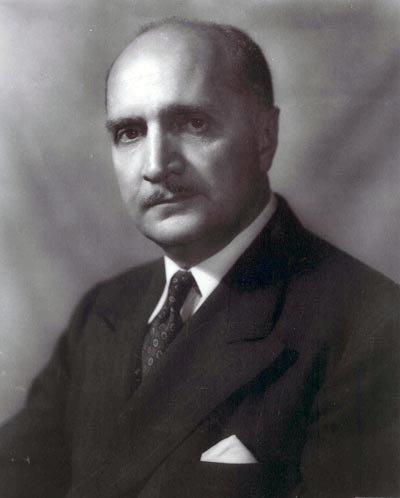


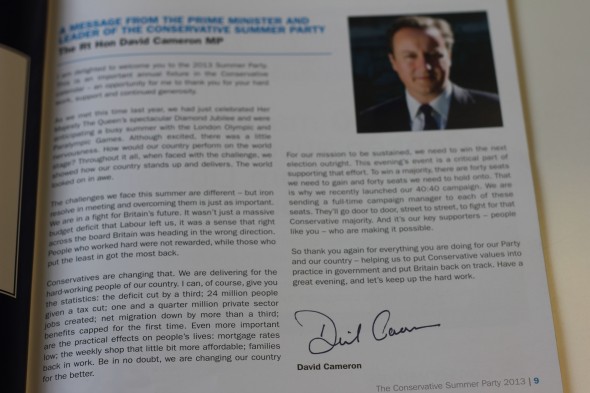


 But Rasmussen left out some key context from his presentation, which he said “is my interpretation” and did not further elaborate on his “disinformation operations” comments.
But Rasmussen left out some key context from his presentation, which he said “is my interpretation” and did not further elaborate on his “disinformation operations” comments.




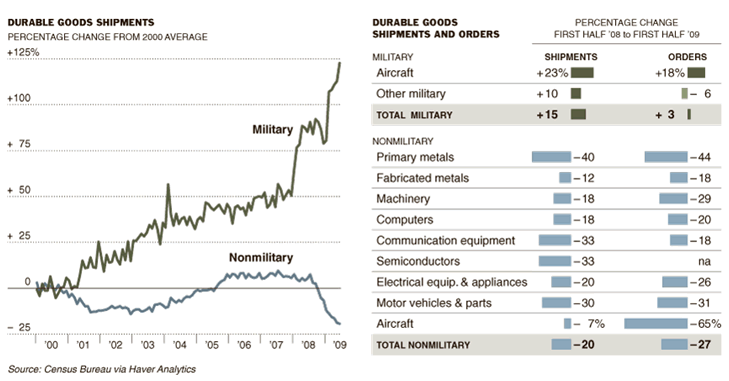

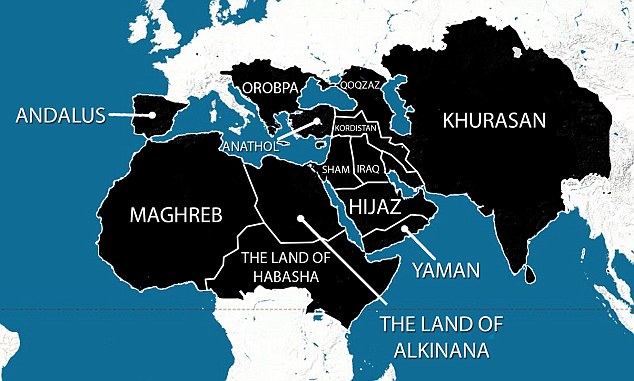


 The Internet’s Own Boy
The Internet’s Own Boy Aaron Swartz
Aaron Swartz
 Australia summoned the Israeli ambassador and warned that the countries’ friendly ties were at risk after Dubai police named three Australian passport-holders in a list of new suspects in the murder of Mahmud al-Mabhuh.
Australia summoned the Israeli ambassador and warned that the countries’ friendly ties were at risk after Dubai police named three Australian passport-holders in a list of new suspects in the murder of Mahmud al-Mabhuh.




































